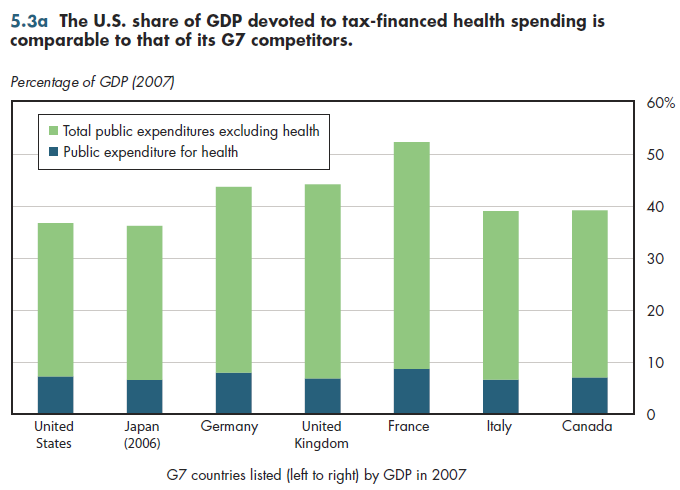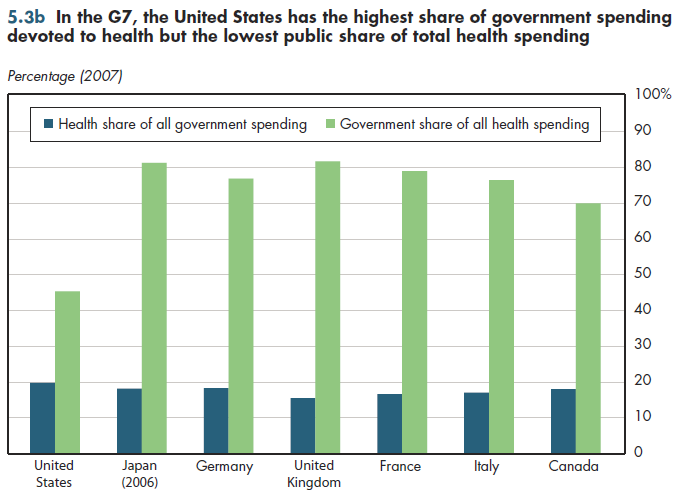The government share of GDP is lower in the United States than in any other country in the G7 except Japan (figure 5.3a). However, the share of GDP attributable to tax-financed health care is higher in the United States than in all other G7 nations except Germany and France. Currently, the difference is not large but is likely to grow because of the new U.S. health reform law. Even for Germany and France, the lion's share of the large difference in government spending relative to GDP relative to the United States is accounted for by factors unrelated to public spending on health care.

Figure 5.3b compares in a different way the public role in health spending between countries. The United States outpaces all of its G7 competitors in terms of the fraction of total government spending that is devoted to health care (this would be true even if the pool of major competitors is extended to include China and Russia). Again, this relatively small difference is likely to increase if the health reform law is implemented over several years.

Despite this, the overall fraction of total health spending that is financed by government is far lower in the United States — by 25 to 35 percentage points — than in any of the other G7 nations. Recall from figure 3.6a that except for a handful of countries, private health insurance in the United States more than fills this "gap" in spending, resulting in out-of-pocket spending as a lower share of U.S. health spending than in almost any other OECD country. Thus, the main difference between the United States and its competitors is not in terms of the fraction of spending that is financed through third parties, but simply the extent to which the United States relies on public insurance rather than private insurance.
Download Excel tables used to create both figures:
Figures 5.3a/5.3b Tables.
Figures 5.3a and 5.3b both were created from the following table (the workbook includes all supporting tables used to create this table):
- Table 5.3. Total General Government Expenditures and Public Expenditures on Health as a Percent of GDP for Selected Industrialized Countries, 2007
Download PowerPoint versions of both figures.
- Author's calculations.
- Organisation for Economic Co-operation and Development.











